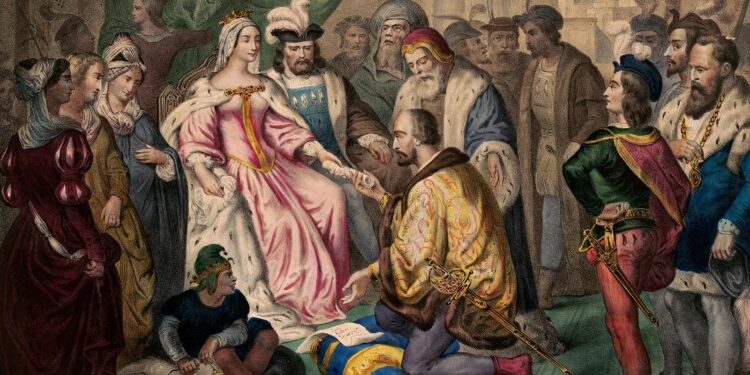Ferdinand VII and Isabella II, two prominent monarchs in Spain’s tumultuous history, left an indelible mark on the nation during the 19th century. Their reigns were characterized by political instability, power struggles, and significant social change.
Ferdinand VII, known as the “Felon King,” ascended to the Spanish throne in 1808 during a period marked by the Napoleonic Wars and the Peninsular War. His reign was marked by absolutism, as he sought to undo many of the liberal reforms of the Spanish Enlightenment. His actions led to intense conflict with liberal factions and resulted in numerous uprisings. His death in 1833 sparked the Carlist Wars, a series of civil conflicts, as his brother Carlos contested the succession in favor of the Salic Law, which excluded females from inheriting the throne.
Isabella II, Ferdinand’s daughter, came to power at the tender age of three in 1833, with her mother Maria Cristina serving as regent. Her early years were marred by political intrigue and power struggles among various factions vying for control. Isabella’s reign witnessed the implementation of the liberal constitution of 1837, which brought about significant reforms, including the abolition of the Inquisition and the sale of church lands.
However, her reign was plagued by scandals, political instability, and a tumultuous personal life. She married her cousin Francisco de Asís, but their marriage was fraught with infidelity and tension. Isabella’s inability to produce a male heir further fueled political turmoil, as it opened the door for a succession crisis. Her rule saw the rise of competing political forces, including the Carlists and the Liberals, who were engaged in a protracted struggle for control of the Spanish monarchy.
Isabella II’s reign came to an end in 1868 when she was deposed during the Glorious Revolution. This marked the culmination of years of political unrest and discontent with her rule. The subsequent establishment of the First Spanish Republic in 1873 marked a turning point in Spain’s history.
In conclusion, Ferdinand VII and Isabella II were pivotal figures in Spain’s 19th-century history. Ferdinand’s absolutism and Isabella’s tumultuous rule shaped the political landscape and set the stage for profound social and political change. Their legacies, though controversial and marked by turmoil, remain integral to Spain’s historical narrative, serving as a reminder of the challenges and transformations that the nation underwent during this turbulent period.



Recent Comments